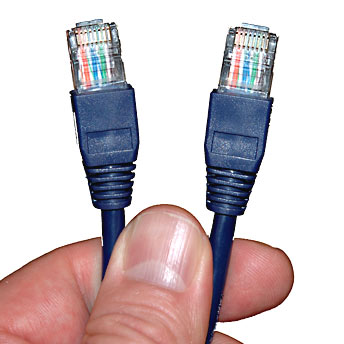Cat 6 cat 6 cables support higher bandwidths than cat 5 and.
Ethernet cable 5e vs 6e.
Cat6e cat6e is not an actual standard.
Cat 5e is an enhanced version of cat5 that adds specifications for crosstalk see below.
Icc offers bulk network cable in three performances.
Although the cat5 cable can handle up to 10 100 mbps at a 100mhz bandwidth which was once considered quite efficient the newer versions of cat cables are.
Cat5 has become obsolete in recent years due to its limitations compared to cat5e and cat6 cables.
Both cat5e and cat6 cable specifications allow lengths up to 100 meters but cat6e has a lower max length 55 meters when used for 10gbase t 10 gigabit ethernet.
It supports high speed ethernet communication up to 10 gbps.
Cat5 cable cat5 cable is broken into two separate categories.
Cat 5e is currently the most commonly used cable mainly due to its low production cost and support for speeds faster than cat 5 cables.
Cat 5e ethernet cable.
Cat5e can have speeds of 1000 mbps and is used in many residential and commercial wired applications for gigabit ethernet.
Cat 5e was introduced to remove the shortcomings for cat 5 and added some more functionalities to an already successful ethernet cable.
Cat5 vs cat5e.
It was enhanced to reduce unwanted transmission of data and signals and increased the transmission speed to 1000 mbps.
Cat5e cable is completely backwards compatible with cat5 and can be used in any application in which you would normally use cat5 cable.
Both the cable utilizes for the same end port piece that commonly known as rj 45.
Cat5 and cat5e cables.
The cat7 cable is backward compatible with cat6 cat5 and cat5e cable categories.
It has not been implemented or qualified by the tia or any other reputable organization or commission.
Cat 5e vs cat 6 technically both ethernet cable cat 5e and cat 6 twisted with a different colour of pair cables that used to copper.
Icc introduced the cat6e cable as a premium offering to cat6 just like most bulk cable manufacturers.
It offers a 100 meter 4 connector channel using shielded cabling and has been designed to transmit signals at a frequency of 600 mhz.
In order to run 10gbase t for 100 meters category 6a cable or augmented category 6 cables need to be used.
Cat6a cat6 and cat5e.
Cat7 cable is otherwise called category 7 ethernet cable.
This is the slowest cable that anyone should use for a new ethernet.
Cat6e is incomparable to cat6 because the standard technically does not exist.
Network support cat 5 cable will support 10base t and 100base t network standards that is it supports networks running at 10 mbps or 100 mbps.

